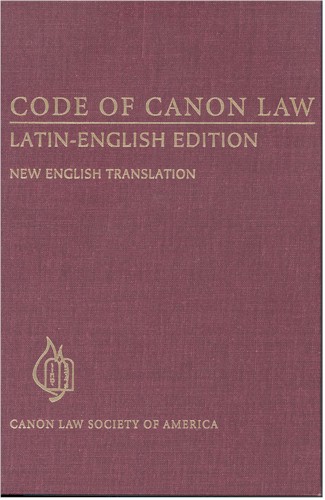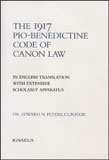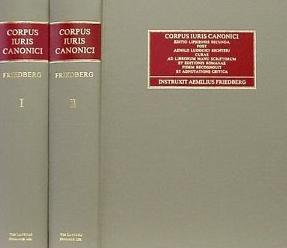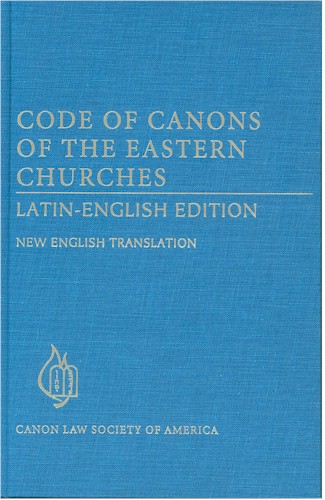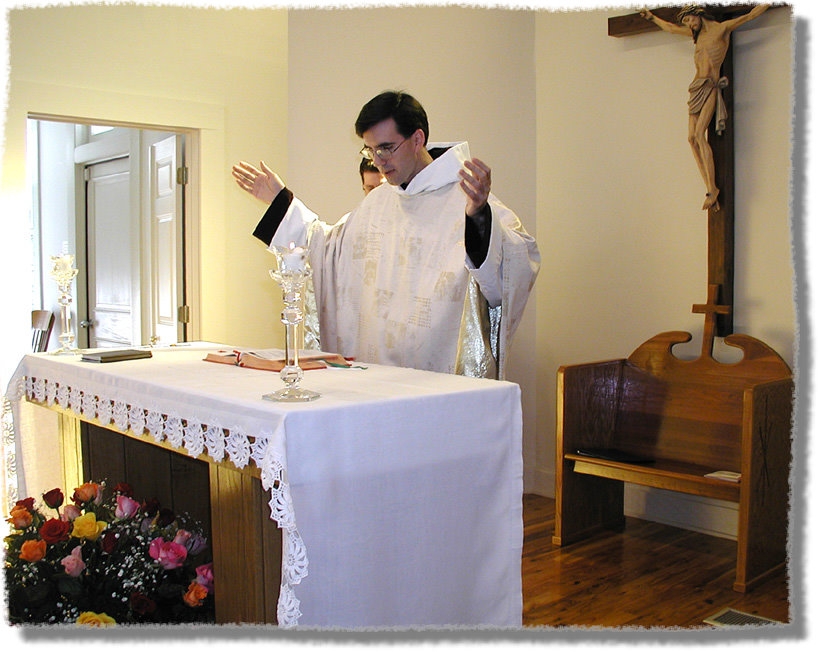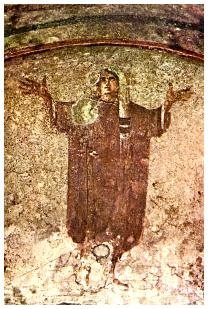|
|
|
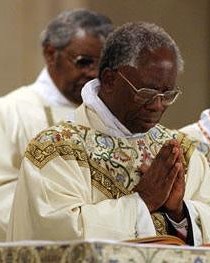
Cdl. Arinze with hands joined,
the position
normally associated with
silent priestly prayer
or with
his prayers offered
with the congregation
|
The first thing to notice here is
that, with the problematic exception of the Our Father, the orans
position is prescribed for the priest only when he is praying aloud and
alone as, for example, during most of the Opening Prayer, the Prayer over the Gifts,
and the Post-Communion Prayer. When, however, the priest is praying aloud
and with the people, for example, during the Gloria or the Creed, his hands are
to be
joined. In other words, a priest praying aloud and on behalf of a then-silent
congregation is clearly exercising a leadership role. The
orans posture being used then cannot occasion congregational
imitation because the people are silent at that point in the
Mass.
On the other hand, when prayers are
being said aloud by the priest and people, the fact that the priest’s hands
are joined during such prayers occasions — if anything by way of
congregational imitation — the traditional gesture of joined or folded hands
that is common among the laity at Mass in the West. |
From all of this, it seems that the rubric calling for
the priest to assume the orans position during the Our Father, in which
prayer he joins the people instead of offering it on their behalf, is at
least anomalous, and probably inconsistent with the presidential symbolism suggested
today by the orans position elsewhere in the
Mass.
There remains to consider, though, how
this apparent miscue appeared in the liturgy.
I suggest that originally,
the orans rubric for the priest during the Lord’s Prayer was not a
mistake but that it became one in the course of liturgical reforms
undertaken by Pope Pius XII just prior to Vatican II. Let's back up a bit.
The Our Father (Pater noster) has been
a part of the Mass for many centuries. Over that time, of course, language
barriers occasioned and rubric evolution reinforced the assignment of nearly all
Mass prayers to the priest. Eventually, the Pater became a prayer that
was offered by the priest on behalf of the people, whose exterior participation
in that prayer was, by the early 20th century, limited to a vicarious one via
the server’s recitation of the closing line, Sed libera nos a malo (But
deliver us from evil). A look at pre-Conciliar rubrics in any Sacramentary
regarding the Pater is consistent in showing that the priest’s hands are extended,
that is, in an orans position, as one would expect for prayers the priest
offers on behalf of the congregation.
But in 1958, as part of Pope Pius XII’s liturgical reforms, permission was granted for, among other things, the
congregation to join the priest in praying the Pater, provided that they
could pray it in Latin (See AAS 50: 643; Eng. trans., Canon Law Digest V:
587). Thus, for the first time in many centuries, a congregational recitation of
the Lord’s Prayer was made possible. Lay recitation of the Pater was not
mandated and there is no evidence that this very limited permission for
congregational recitation of the Pater occasioned awareness that such
permission, if it were ever widely acted upon, might necessitate a change in the
rubrics for the priest. Unfortunately, by the time such changes did come about, it seems, the orans
posture and the Lord’s Prayer had become
associated, not with the manner in which the prayer was being offered, but with
the prayer itself. From there, it seems, the rubric calling for or the priest
to continue using the orans position during the Our Father simply passed unnoticed into the new rite of
Mass.
|
